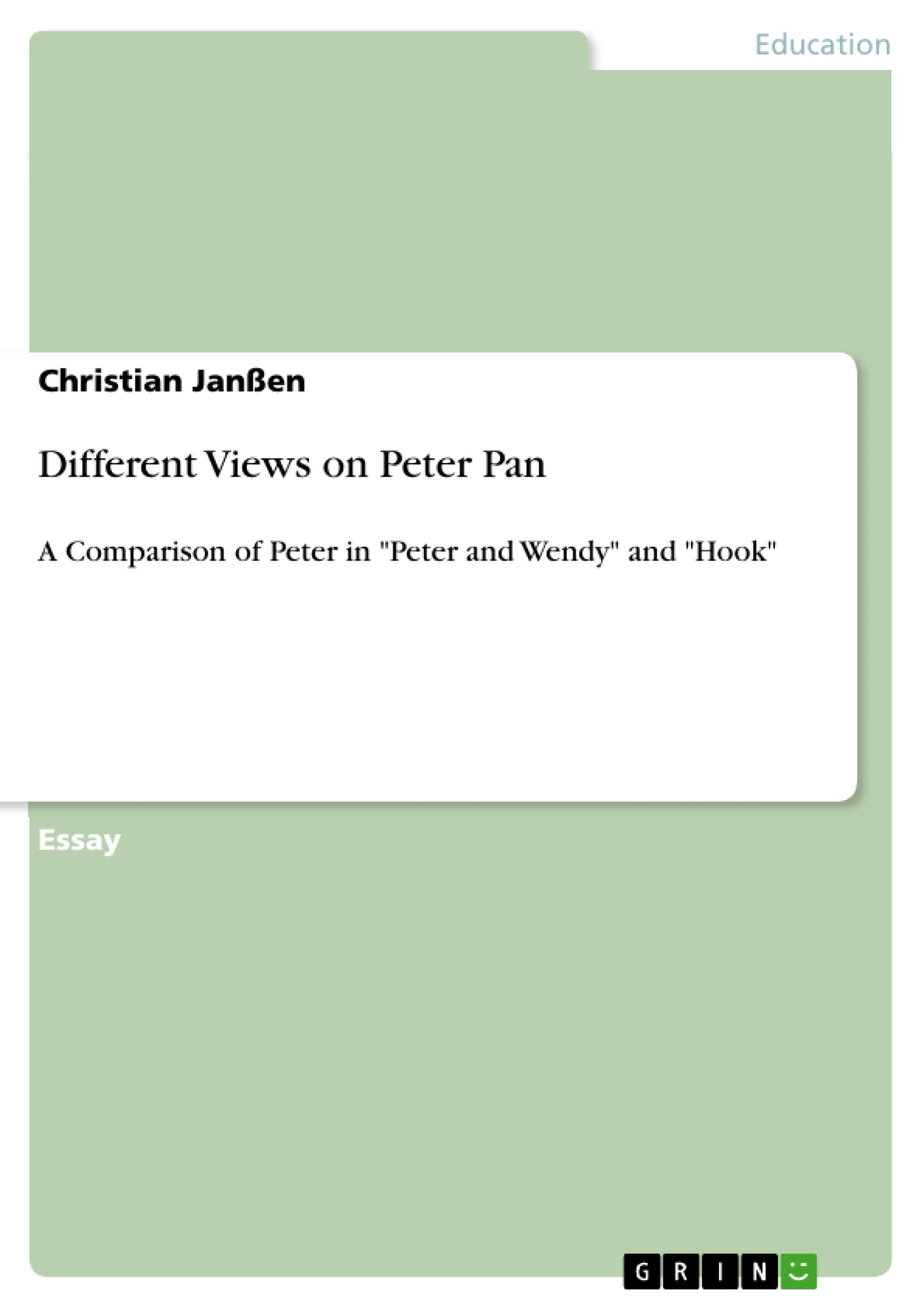This essay wants to compare and contrast one of the first versions of Peter Pan, "Peter and Wendy" from 1911, with the movie "Hook" from 1991. The hypothesis of the paper is that both interpretations have different central messages depending on the cultural and social background in which the book was written and the movie was made. To expose these central messages the paper focuses on the characterization of Peter Pan who is the main character in both stories. The object of this research and the aim of comparison and contrast of the two adaptations are to discover how the differences of these messages look like and how they are in detail related to society.
The essay is structured as follows: After the introduction the second chapter explains why especially these two adaptations of Peter Pan are chosen. The third chapter discusses the gender background of Peter Pan to open a cultural perspective and get a better understanding of the main character. After that follows the characterization of Peter in the fourth chapter. This, as the main part of the assignment, is divided into several subchapters which describe different facets of Peter’s character. The most remarkable characteristic of Peter is his person being an embodiment of childhood. This factor will be analyzed in even more sub-chapters. Furthermore, the fourth chapter gives a conclusion and points out the main results. Finally, in the sixth chapter an outlook will be taken and two examples of the huge social impact of Peter Pan, on the one hand The Peter Pan Syndrome and on the other hand the relation between the author of Peter Pan, J. M. Barrie, and the Great Ormond Street Hospital will be described in detail.
Table of Contents
- Introduction
- Why Choosing Peter and Wendy and Hook?
- Gender-background: Masculinity of Peter Pan
- Main Characteristics and Abilities of Peter Pan
- Embodiment of Childhood
- A Boy who does not Grow up
- Ability of Living on an Imaginable Island
- Ability of Eating by Imagination
- The Ability not to be Frightened about Mistakes
- Ability of Flying
- Peter as a Nature Boy
- The Ability to Forget
- Embodiment of Childhood
- Conclusion
- Outlook: Social Impact of Peter Pan
- Peter Pan Syndrome
- Irresponsibility
- Anxiety
- Loneliness
- Sex Role Conflict
- Narcissism
- Chauvinism
- The Crises: Social Impotence
- Great Ormond Street Hospital
- Peter Pan Syndrome
Objectives and Key Themes
This essay aims to compare and contrast two different interpretations of Peter Pan: Peter and Wendy (1911) and the film Hook (1991). The main objective is to demonstrate how these interpretations reflect different central messages influenced by their respective cultural and social contexts. The paper analyzes the character of Peter Pan, highlighting his role and significance in both stories.
- Cultural and social context's influence on the portrayal of Peter Pan
- The characterization of Peter Pan in different interpretations
- The concept of Peter Pan as an embodiment of childhood
- The potential social impact and implications of the Peter Pan archetype
- The relationship between the author J.M. Barrie and the character of Peter Pan
Chapter Summaries
- Introduction: This chapter introduces the essay's objective to compare and contrast Peter and Wendy and Hook. The essay focuses on Peter Pan as the central character and aims to uncover the differences in their portrayals and social implications.
- Why Choosing Peter and Wendy and Hook?: This chapter explains the rationale behind choosing these specific interpretations of Peter Pan. It discusses the historical context of each work and how they represent different perspectives on the character.
- Gender-background: Masculinity of Peter Pan: This chapter examines the gender role of Peter Pan in Peter and Wendy. It explores the ambiguous nature of his masculinity, suggesting that he represents a more neutral, childlike identity without the traditional expectations of a grown man. The chapter also explores different interpretations of Peter's relationship with Wendy and the Lost Boys.
Keywords
The main keywords and focus topics of this paper include Peter Pan, Peter and Wendy, Hook, cultural and social contexts, characterization, embodiment of childhood, social impact, The Peter Pan Syndrome, J.M. Barrie, and Great Ormond Street Hospital.
- Quote paper
- Christian Janßen (Author), 2013, Different Views on Peter Pan, Munich, GRIN Verlag, https://www.grin.com/document/386055



